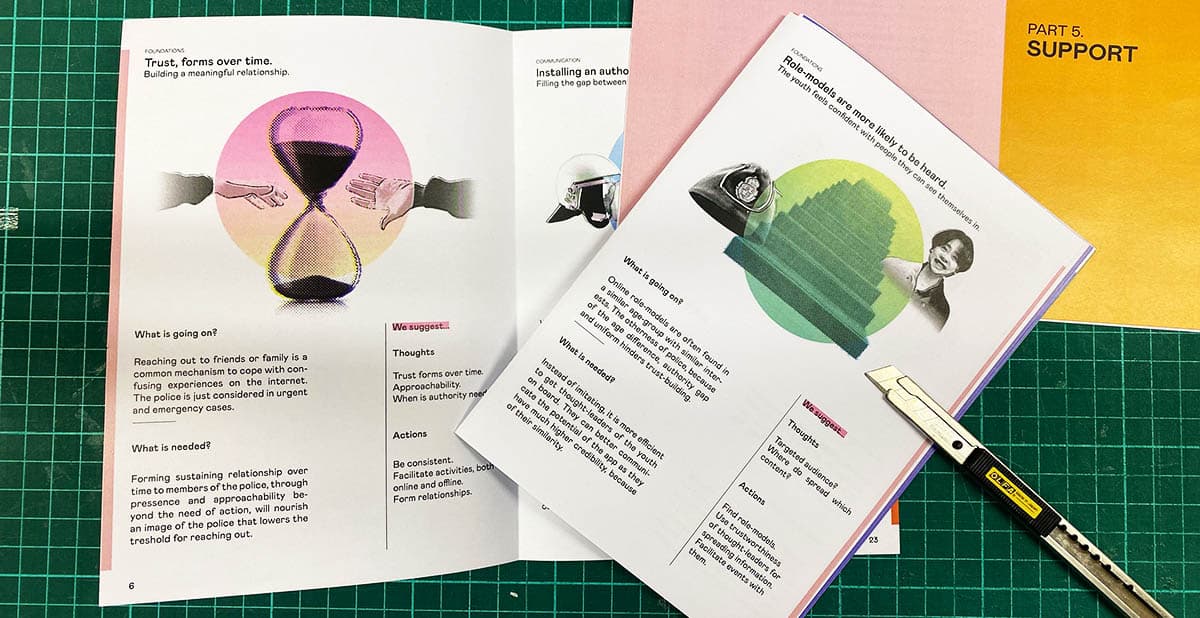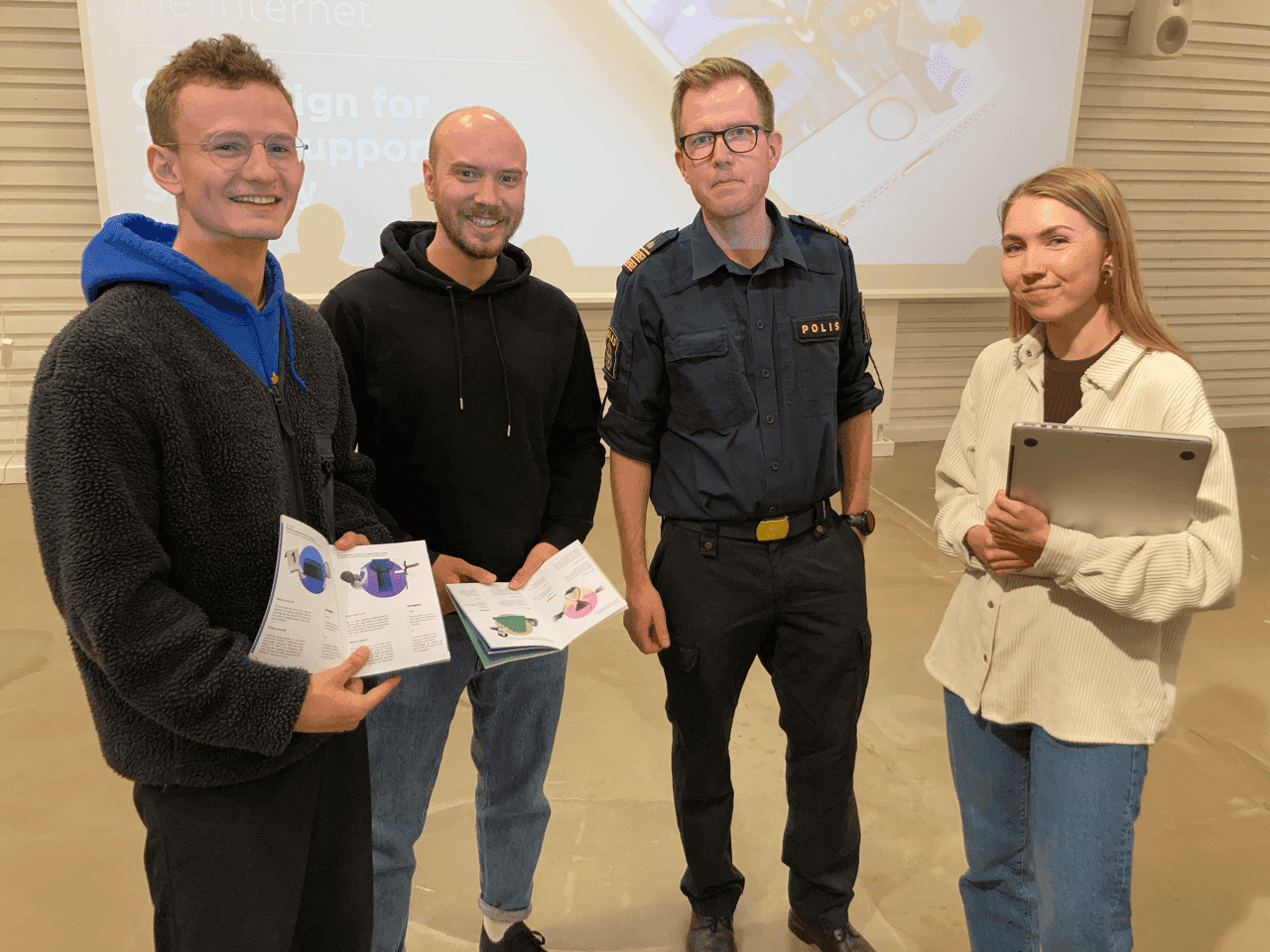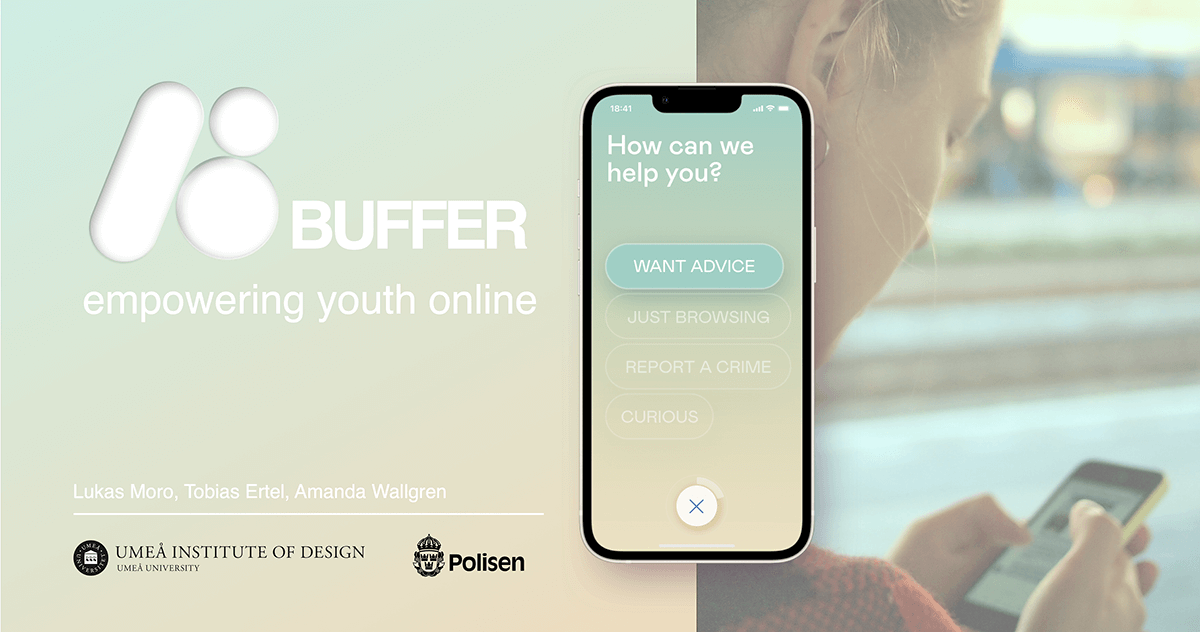Project info
Team
Type
Supervisor
Collaborations
About the Project
Final results:
This project is focused on lowering the threshold for youth taking action,
and receiving assistance, when they feel something weird is happening online.
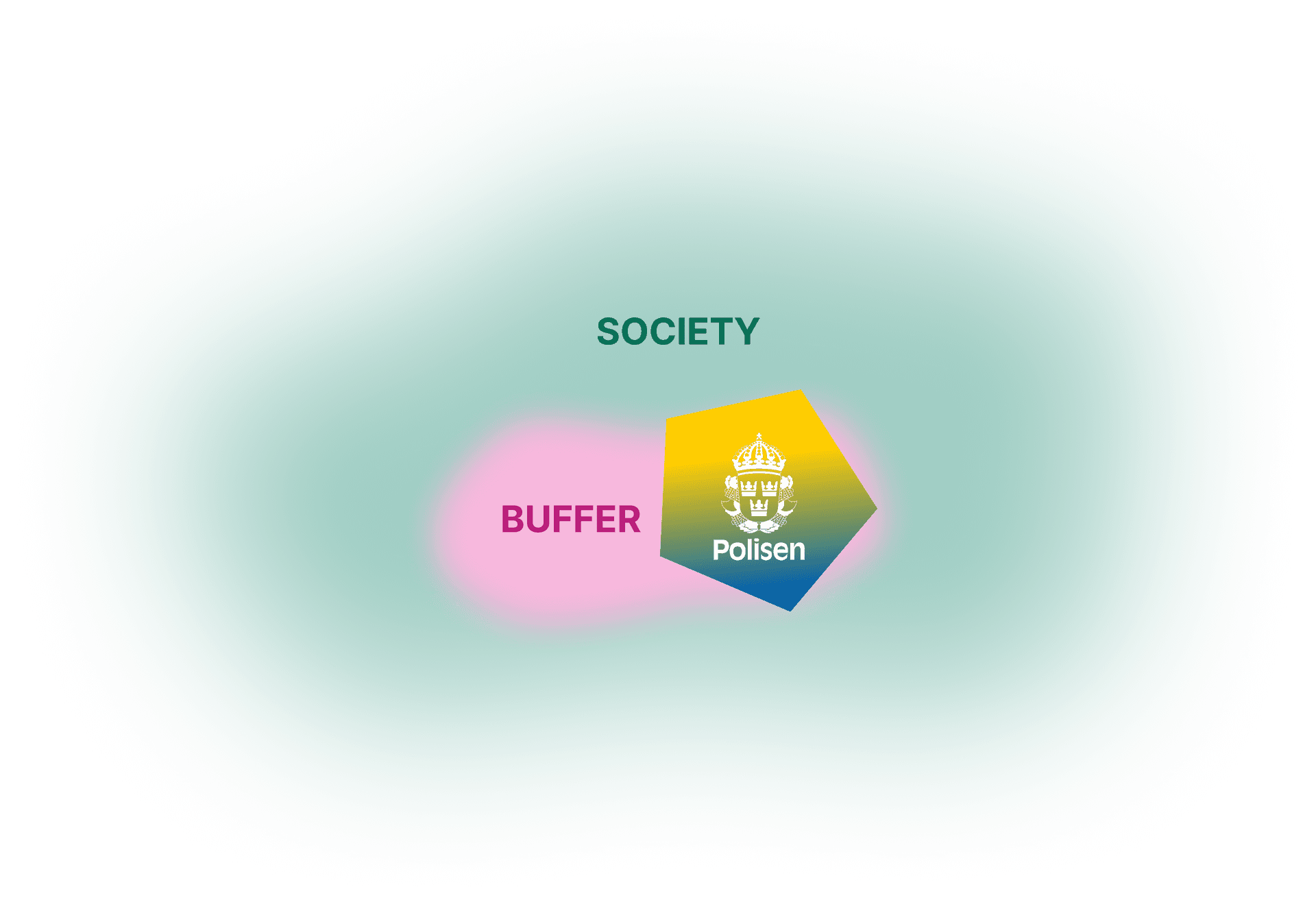
The Buffer Zone
When young people experience troubling situations online, reaching out the to police often feels overwhelming. Questions arise: Is this actually illegal? What will happen if I report it? These uncertainties create barriers to seeking help. A "buffer zone" addresses these concerns by positioning supportive intermediaries like therapists and NGO workers between youth and law enforcement. These trusted figures offer clarity, emotional support, and practical assistance, transforming what can be an intimidating process into one that feels manageable and secure.
From Concept to Action: Meet Anna
Understanding how a buffer zone works in theory is one thing—but seeing it come to life makes all the difference. To illustrate how this supportive ecosystem functions in practice, let's follow Anna, a 15-year-old who finds herself facing an weird online situation. Through her experience, we'll see how Buffer transforms uncertainty into empowerment, one step at a time.
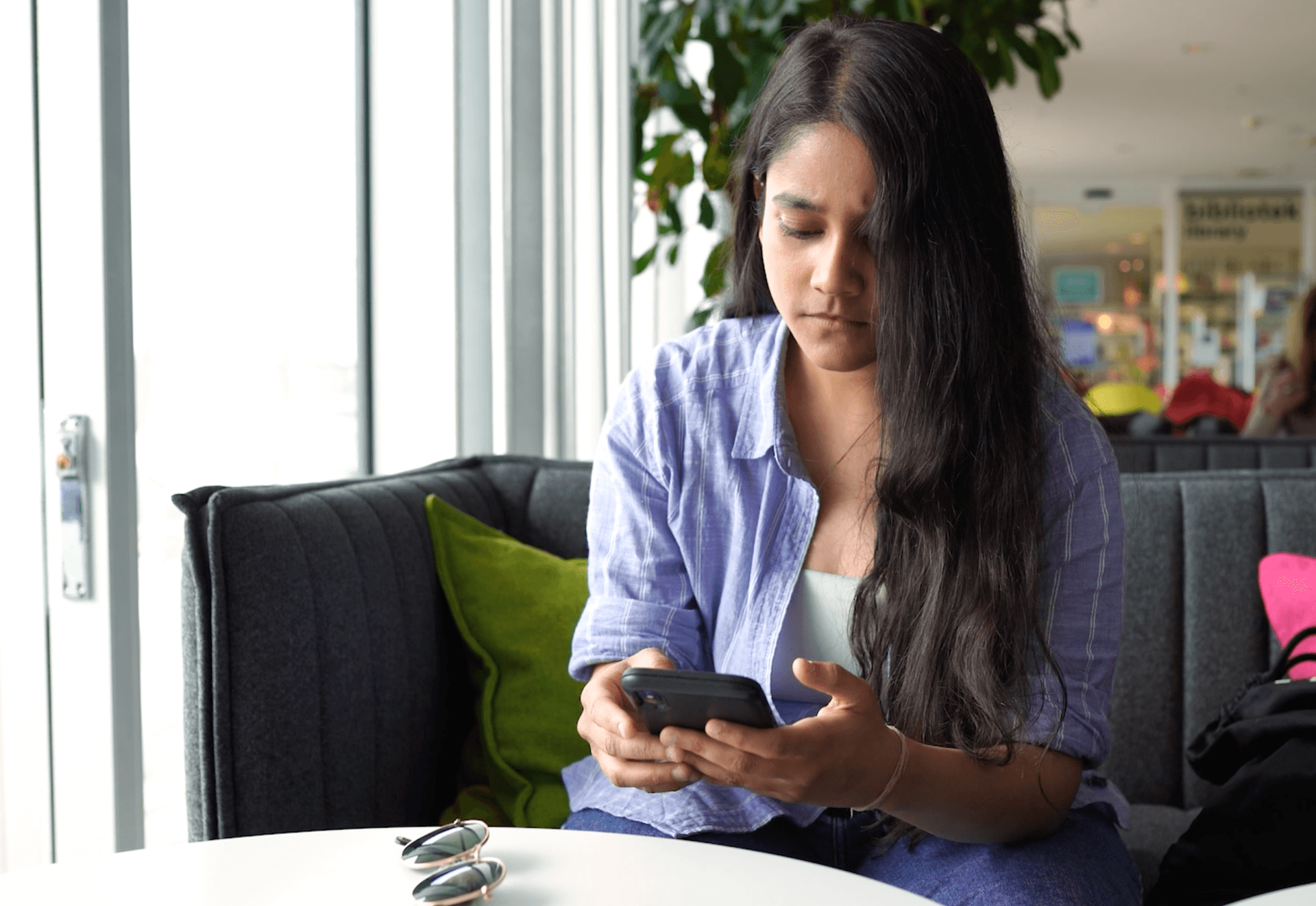
Discovering Buffer
Anna's journey begins unexpectedly. While scrolling TikTok, she comes across a Buffer link and taps it out of curiosity. An App Clip launches—a lightweight preview that doesn't require downloading anything yet.
Inside, she finds straightforward information about situations like hers: what happens when personal images are shared without consent, and what options exist. It feels relevant. It feels safe. She downloads the full app.
Getting Started
After signing up, Buffer asks Anna to share a bit about herself and what brought her here today. The questions feel gentle, not like an interrogation—designed to understand her situation without pressure.
Once she's finished, Anna takes time to explore what Buffer has to offer: the support network available, the different types of professionals she can connect with, and the various paths forward she can take at her own pace.
Reaching Out for Help
A few weeks pass, and Anna finds herself in an increasingly uncomfortable situation. A guy has been sending her unsolicited explicit images, and despite her attempts to make it stop, the messages keep coming. She feels uneasy, confused about whether this is something she can—or should—report. That's when she remembers Buffer.
Opening the app again. Still uncertain about how serious her situation is or what the right response might be, she decides to share her story anonymously within the Buffer community. It feels like a safer first step, a way to get perspective without fully committing to official action just yet.
Finding Connection and Support
When Anna opens Buffer again, she's surprised to see how many people have reacted to her story others who've experienced something similar. It's a small comfort, knowing she's not alone in this. Then she notices a message: Sara, an NGO streetworker, has reached out. Sara saw Anna's story because it contained a hashtag she specializes in. Buffer automatically notifies professionals when posts match their areas of expertise.
Sara's message is warm and understanding. She suggests inviting Sabina, a police officer, to join their conversation. Anna hesitates — police feel serious. However, Sara reassures her that they will navigate this together, with Sara facilitating the entire conversation. Anna agrees. With both Sara and Sabina in the conversation, she feels protected rather than exposed
The Impact: Building Trust Through Support
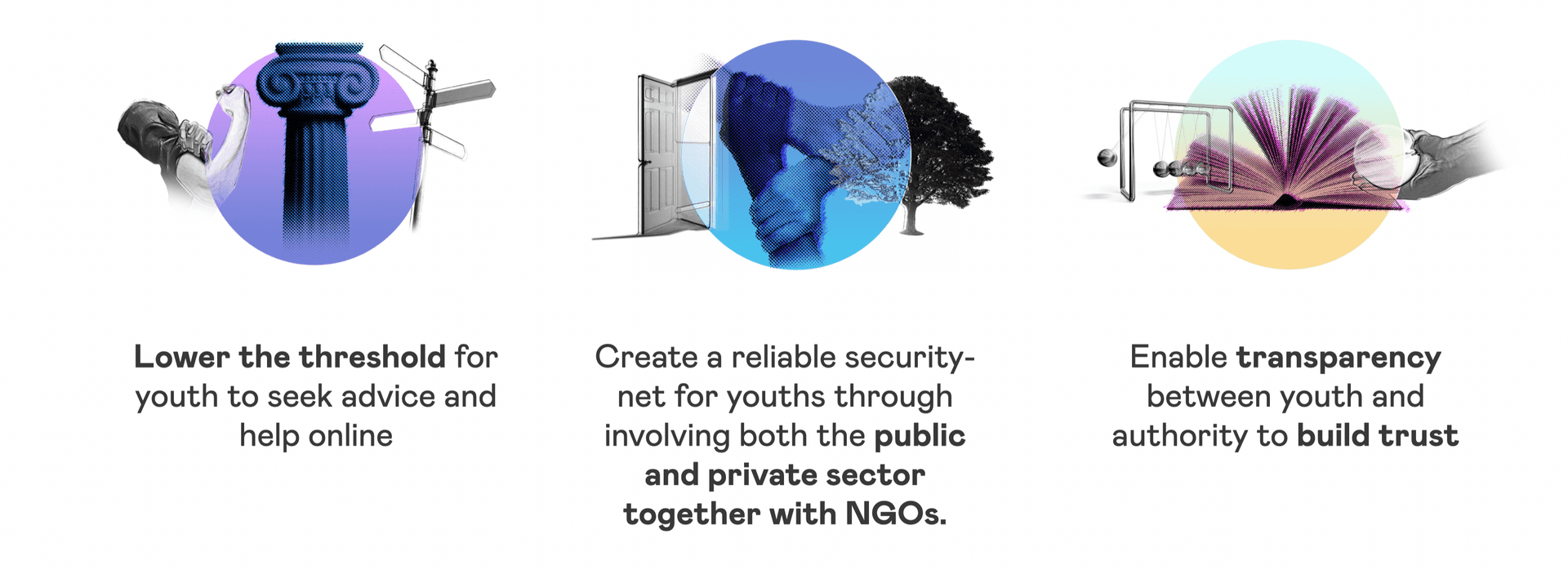
Anna's experience illustrates Buffer's core mission in action. By lowering the threshold for seeking help allowing her to start with an anonymous story rather than a formal report Buffer meets young people where they are. The collaboration between Sara (NGO) and Sabina (police) demonstrates how public and private sectors can work together to create a reliable safety net.
Most importantly, the transparency throughout Anna's journey knowing who she's talking to, why they're involved, and what happens next builds the trust that makes youth feel safe enough to reach out in the first place.
How Buffer Works: The User Journey
Buffer's structure is designed around flexibility and gradual engagement, meeting young people wherever they feel comfortable starting.
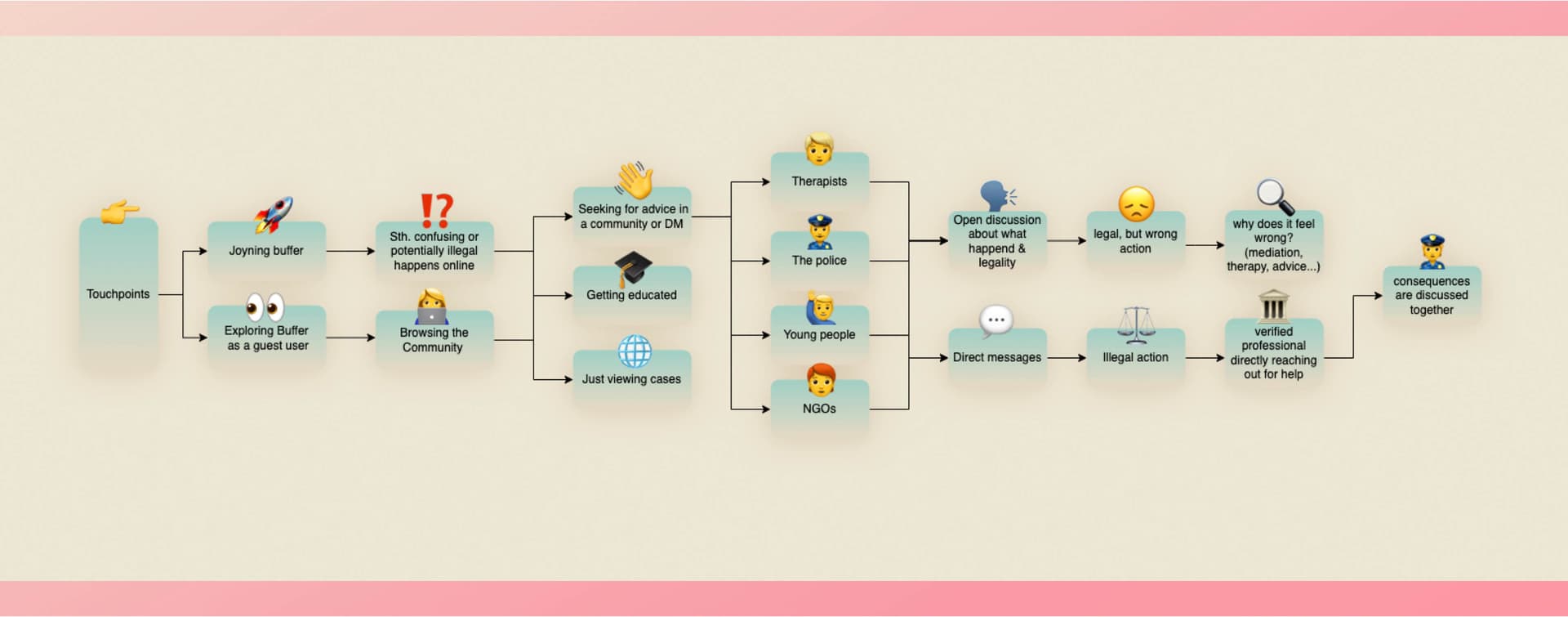
Our Process
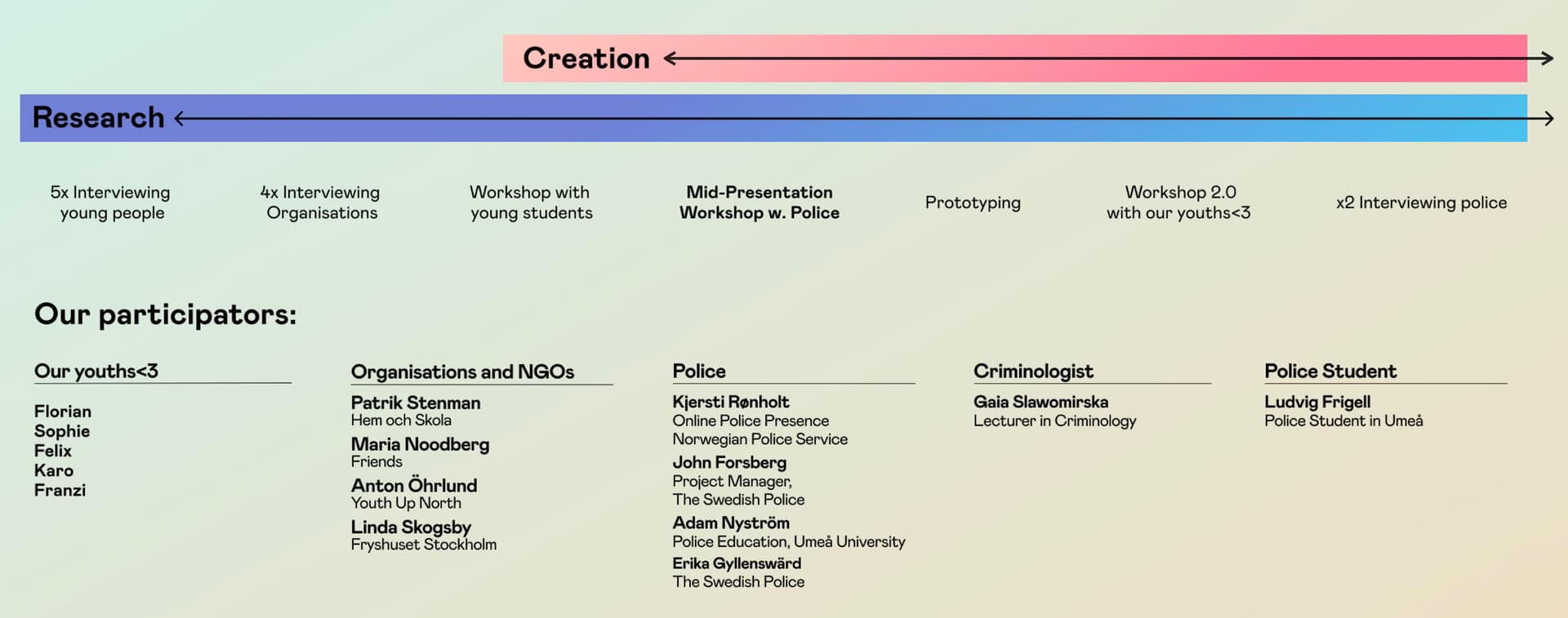
Our Process: Research-Driven, Youth-Centered
An intensive research phase anchored our entire design process. Through 11 qualitative interviews, we built a foundation of understanding—but we knew that wasn't enough. To truly grasp what young people need, we had to involve them directly in shaping the solution.
Co-Creation Through Workshops
We conducted two workshops later in the process, employing methods like "boundary objects" to bridge different perspectives and make abstract concepts tangible. These sessions taught me a crucial lesson about design work: the ability to shift fluidly between being a designer and being a facilitator of discovery.
Uncovering Hidden Needs
The most valuable insight from our co-creation work was this: participants themselves often can't articulate their real problems. They describe symptoms, workarounds, or surface-level frustrations. It takes empathetic interaction and careful facilitation to look beyond what people say they need and identify what they actually need. This empathetic approach became critical in revealing the true barriers young people face when seeking help online—barriers that even they hadn't fully recognized or named.


The final Booklet
The booklet summarises the insights we synthesised during our interviews with young adults, the police and NGOs. It provides an overview of the current situation and makes suggestions on how to address the issues that young people face concerning policing on the internet.
Don't hesitate to take a look into the booklet!
